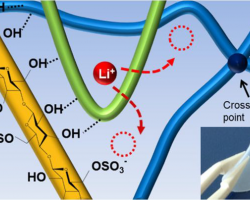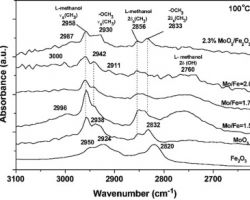Below is a list of selected recent publications by our faculty. This is to provide a general overview of the rich and diverse topics that our faculty and students work on. A detailed list of publications can be accessed via individual faculty pages (and in their group webpages, google scholar profiles, etc.)

The Solution is the Solution: Data-Driven Elucidation of Solution-to-Device Feature Transfer for π-Conjugated Polymer Semiconductors (16 January 2022)
Connor P. Callaway, Aaron L. Liu, Rahul Venkatesh, Yulong Zheng, Myeongyeon Lee, Carson Meredith, Martha Grover, Chad Risko, Elsa Reichmanis
Data analytics techniques coupled with materials informatics provides opportunities to accelerate the discovery and development of organic semiconductors for electronic devices. This Perspective outlines steps required to incorporate a comprehensive informatics methodology into experimental development of polymer-based organic semiconductor technologies, where data-driven approaches offer predictive capabilities previously unattainable via traditional experimental means.

Induced activation of the commercial Cu/ZnO/Al203 catalyst for the steam reforming of methanol (20 January 2022)
Didi Li, Fang Xu, Xuan Tang, Sheng Dai, Tiancheng Pu, Xianglin Liu, Pengfei Tian, Fuzhen Xuan, Zhi Xu, Israel E. Wachs, Minghui Zhu
An induced activation strategy was developed to manipulate the catalyst surface reconstruction process for the supported Cu/ZnO/Al2O3 catalyst for methanol steam reforming by controlling the composition of reducing agents during catalyst activation. This treatment resulted in increasing the long-term catalyst stability by threefold and catalytic activity enhanced by twofold.

Single-pot Fabrication of Cellulose-Reinforced Solid Polymer Lithium-Ion Conductors (23 February 2022)
Helen Wong, Nian Liu, Elsa Reichmanis
Polymer electrolytes present a promising alternative to conventional liquid electrolytes for flexible power needed for portable electronic systems due to higher mechanical integrity and lower risk of leaking solvent. Here, we demonstrate a ‘single-pot’ synthetic approach using a non-toxic cellulose additive that affords a flexible, free-standing solid polymer electrolyte. The results providea path towards sustainable, polymer electrolytes with performance metrics suitable for applications having lower energy demand.Polymer electrolytes present a promising alternative to conventional liquid electrolytes for flexible power needed for portable electronic systems due to higher mechanical integrity and lower risk of leaking solvent. Here, we demonstrate a ‘single-pot’ synthetic approach using a non-toxic cellulose additive that affords a flexible, free-standing solid polymer electrolyte. The results provide a path towards sustainable, polymer electrolytes with performance metrics suitable for applications having lower energy demand.

Molecular Design of Supported MoOx Catalysts with Surface TaOx Promotion for Olefin Metathesis (23 February 2022)
Bin Zhang, Shuting Xiang, Anatoly I. Frenkel, Israel E. Wachs
Surface modification of Al2O3 by tantalum oxide shifted the anchoring sites of MoOx on Al2O3. These changes in anchoring sites of MoOx resulted in an increasing number of active sites with higher specific activity (TOF).

Towards a chemistry-informed paradigm for designing molecules (March 2022)
Christopher Rzepa, Srinivas Rangarajan

Comparing the energy requirements for amine absorption processes for CO2 capture (March 2022)
Samuel J. Layding, Hugo S. Caram
Gelation phase diagrams of colloidal rod systems measured over a large composition space (27 April 2022)
Characterizing Nonuniform Hydrogel Elastic Moduli Using Autofluorescence (16 May 2022)

Competing Time Scales in Surface-Driven Solution Depolymerization (14 October 2022)
Polymers that can undergo controlled or triggered depolymerization have garnered significant interest due to their use as recyclable or degradative materials. A variety of “self-immolative” chemistries have been developed, where this depolymerization process proceeds either spontaneously or upon application of a stimulus.
Liquid-Liquid Transition in Water from First Principles (15 December 2022)
A long-standing question in water research is the possibility that supercooled liquid water can undergo a liquid-liquid phase transition (LLT) into high- and low-density liquids. We used several complementary molecular simulation techniques to evaluate the possibility of an LLT in an ab initio neural network model of water trained on density functional theory calculations with the SCAN exchange correlation functional.

Dynamic Emissivity of Self-Assembled Magnetoresponsive Janus Particle Chain Suspensions (30 December 2023)

The transition from Elasto-Hydrodynamic to Mixed Regimes in Lubricated Friction of Soft Solid Surfaces (13 February 2023)

A new approach for determining roughness by means of contact angles on solids (8 March 2023)
RJ Good, MK Chaudhury, C Yeung

Controlling neocortical epileptic seizures using forced temporal spike-time stimulation: an in silico computational study (28 June 2023)

A novel “feed-backward” control structure for on-demand control of distillation column sequences (7 August 2023)

Nutrient-Doped Hydroxyapatite: Structure, Synthesis and Properties (16 August 2023)
Complex inorganic powders based on calcium phosphates have found a plethora of practical applications. Of particular interest are the CaO-P2O5 system-based multi-component material powders and granules as the source of major- and micronutrients for the plants.

